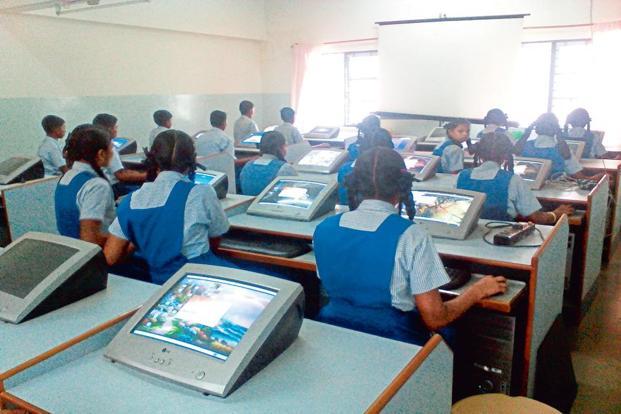Gone are the days when the definition of ‘learning’ was restricted to a four-walled classroom with 40 students or more being managed by a stand-alone teacher. The teachers too, in such a tight and demanding environment would not be able to attend to each student personally. Lessons after lessons, homework after homework– the teacher has to maintain a certain pace to complete the curriculum on time. Needless to say, such an exercise can take a toll on both the students and the teachers. The students may end up not understanding it at all, and the teachers may not derive the same satisfaction. This is one of the biggest challenges haunting the traditional education system.
The popular rendition of the term ‘learning’ which has undergone a massive sea change is expanding all horizons to include the various digital channels and contemporary resources. With a plethora of resources available online, a learner might often struggle with which source to rely on. Amidst such confusion, e-learning platforms provide a common ground for any user to access and harness the prescribed knowledge content. All it requires is an internet connection and the click of a button.
First things first: online learning is not here to compete with, but to complement classroom education. It does not serve as an alternative, but can play the role of an ‘additional coach’, or supplemental education, effectively. Here is how:
Enhanced learning experience

Online learning is one of the most convenient and flexible modes of gaining knowledge as a student can access the study material available online at any given time and from anywhere in the world. It also enables students to learn at their pace instead of being rushed through the concepts in a single session. Moreover, it reduces the costs that one might incur in expensive private tuition by serving as an effective additional coach through viable ‘freemium’ plans. Some digital platforms also offer students the convenience to pose any question and get instant yet meaningful answers from adept users belonging to different areas of the world, thus not only leading to a wider understanding of the concept itself but also ushering a sense of global integration.
E-learning also eases the combined burden on the teachers and their pupils. Earlier a teacher would be responsible for delivering lessons to about forty or more students in a traditional setting. Such a method may prove ineffective as every student has a different grasping ability and knowledge retention owing to their individual aptitude and cognizance. But thanks to e–learning, a student can now clear their doubts and attain a lucid understanding of the core concepts simply by logging into an e-learning platform and connecting with the brightest brains on the planet who act as mentors.
Furthermore, since e-learning has elements of gamified, visual, and auditory content, it also helps to increase engagement, especially among the younger spectrum of learners. Moreover, the anonymity factor in these platforms also plays a key role in improving the learning process. Often students who hesitate to speak or raise questions in a classroom find the confidence to express themselves on online learning platforms where one can withhold their identity. E-learning, therefore is verily an enhanced learning experience for students regardless of their age, location, level of education, economic and social status.
Personal development

Some people often presume that online learning may hinder personal development by restricting learners to isolated settings with a single screen as the interface for all communication purposes. However, on the contrary, online learning helps students attain a well-rounded holistic growth and a greater sense of belonging. These platforms are helping build a wholehearted community of learners, teachers, and experts who hail from different backgrounds and nationalities. Such an exchange of knowledge and ideas helps inculcate within students, a sense of respect for diversity. As an inclusive environment, it also proves to be a fertile ground for seamless interpersonal and social interactions, which prove handy in real-life scenarios.
This allows the real-time simulation of rational reasoning and multidimensional learning, fueled further by insightful discussions and constructive feedback. Apart from these analytical skills, e-learning also helps to boost curiosity and creative development. Students, who become aware of different things, naturally develop new interests as a result of their heightened imagination and cognition. Therefore, while classroom learning may only equip learners with the basics, e-learning empowers them with an all-round practical understanding that is essentially the culmination of academic learning, personal growth and social development.
Democratization of education

As previously mentioned, online learning has brought about the flexibility of access to content anytime and anywhere. This is a very significant factor when it comes to the actual proliferation of education all over the world. Given the pace at which digital penetration is taking place in India, for instance, a child belonging to a remote location in the country is now empowered with access to high-quality sources and academic content. Moreover, e-learning can supplement the education process in such backward zones where the standard of education is not at par with the more affluent ones, thus resulting in a truly enhanced learning experience for the needy and deserving students.
From a global purview—online learning can help improve the quality of education in the underdeveloped areas of a nation by enabling access to content from developed academic institutions, whether by way of fellow students and teachers to even material released by the institutions themselves. In this manner, e-learning is helping realize the true democratization of education all across the globe.
In essence, while there are significant differences in the way classroom learning and e-learning are approached and the way they affect learners, it is important to understand that e-learning is not here to simply supersede traditional pedagogy. They actually work hand-in-hand. In fact, e-learning can be the catalyst towards ensuring a democratized system that is engaging and more efficient in terms of delivering quality education to inquisitive learners all over the world.





























